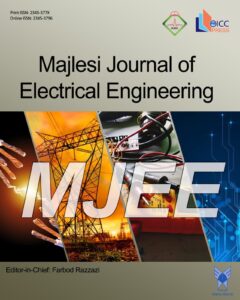
Nowadays, sea wave energy is widely regarded as an energy source that is clean, renewable and highly available for power extraction. The subject of extracting the maximum power from sea waves in Iran is of great importance due to access to the Caspian Sea and the Persian Gulf. Moreover, there is a need for resources […]
Segmentation is a fundamental element in medical image processing (MIP) and has been extensively researched and developed to aid in clinical interpretation and utilization. This article discusses a method for segmenting abnormal masses or tumors in medical images that is both robust and effective. We suggested a method based on Active Contour (AC) and modified […]
Mobile Wireless Sensors Networks (MWSNs) are used in several applications presenting difficult/dangerous environment and/or requiring the movement of sensors after initial deployment. Optimizing the use of the limited energy resource in a MWSN is a key challenge for researchers to maintain longer network survival. This paper attempts to provide an energy-efficient data routing solution for […]
In this paper, variable latency speculative Multiply-Accumulator (MAC) architectures are introduced. The proposed architectures use the idea of integrating the results vectors of multiplier in parallel with the accumulator to create asynchronous data paths design. The proposed variable latency speculative MACs consist of two short and long data paths and a circuit is used to […]
In today’s industrialized world, to survive in competitive markets, businesses are required to identify the expectations of their customers, whether explicitly or implicitly, and focus on these needs from the planning to the operational level. To produce customer-oriented products, it is important to extract design requirements that meet the identified needs. The purpose of the […]
The successful operation of a wireless sensor network depends on the proper coverage of the environment, which in turn is affected by the number and location of sensors. In most cases, the sensors are placed randomly in the deployment region, so by default, most coverage is not achieved in their initial deployment. One of the […]
Applying semiconductor technology, network-on-chips (NoCs) are designed on silicon chips to expand on-chip communications. Three-dimensional (3D) mesh-based architecture is also known as a basic NoC architecture characterized by better energy consumption and latency compared with two-dimensional (2D) ones. Recently developed architectures are based on regular mesh. However, there are serious drawbacks in NoC architectures including […]
In this paper, we use a nonlinear hierarchical model predictive control (MPC) to stabilize the Segway robot. We also use hardware in the loop (HIL) simulation in order to model the delay response of the wheels' motor and verify the control algorithm. In Two-Wheeled Personal Transportation Robots (TWPTR), changing the center of mass location and […]
With the expansion of human activities, the volume of waste and hazardous waste produced has increased dramatically. Increasing the volume of waste has created challenges such as transportation hazards, cleanup, disposal, energy consumption, and most important environmental problems. The difficulty of unsafe waste control is one of the critical studies topics. Finding the optimal location […]